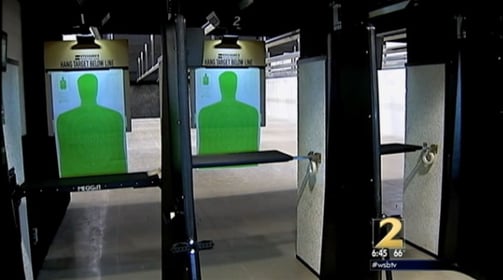DAYTON, OHIO — Lawmakers in both the House and Senate are pushing through a litany of legislative efforts to expand gun rights for the law-abiding Ohioan. Efforts include a recent measure passed through the Senate, Senate Bill 199, which would expand an employee’s right to carry to include the workplace.
According to Dayton Daily News, a major source of the push-back to this new effort includes a lot of business owners. They argue that the right to carry shouldn’t include someone else’s property.
“Our opposition to it has nothing to do with anything an employee may or may not do with the firearm. It has to do with the firearm coming onto the property at all,” said Don Boyd, director of labor and legal affairs for the Ohio Chamber of Commerce. “Many believe property rights are just as important as other constitutional rights.”
As the law currently stands in Ohio, citizens may only carry onto another person’s property with permission from the business. Some businesses choose to adopt a “no guns” policy which forbids an employee from carrying a gun into the workplace.
Jim Irvine, chairman of the Buckeye Firearms Association, and a vocal advocate for the new measure posited the following to business owners:
“For any business that tells you they don’t like this, ask them, ‘Are you willing to take the liability for the 25-year-old single mother who gets car-jacked on the way home?’” Irvine said. “There is no right to be free of guns. There is no right to be free of stupid people. We don’t have the right to be free of danger.”
This is turning into a contentious topic because it touches upon two very pivotal things in American culture: the right to keep and bear arms AND the right for private property owners to control their property.
When a business loses a say over who can and cannot carry a firearm onto the property, there is a clear violation of that owner’s rights. Private property, whether leased or owned, is central to this debate.
If Senate Bill 199 goes through and is signed into law, it would countermand that basic right.
Of course, we’ll also see plenty of arguments from anti-gun lobbyists seeking to use this thread to unravel a number of otherwise good, healthy initiatives.
“If guns made you safer we would have the lowest crime rate in the world because we have so many guns on our streets,” Laura Cutilletta, managing attorney for the Law Center to Prevent Gun Violence said. “And yet our gun death rate is so much higher than many other countries. So obviously it is not working the way that the gun rights people are saying it is.”
The problem with anti-gun lobbyists is they will skew and manipulate statistics to back their agenda. The argument of a private property owner’s rights is valid. It is. If the state comes in and starts demanding private property owners allow other people on their land with guns, it takes that decision outside of the hands of the person paying taxes and maintaining that land.
This other claim, though, from the Law Center to Prevent Gun Violence, is a clear manipulation of gun data to intimidate Ohio constituents. Discounted in her statement are the number of those bearing arms who are legally prohibited from doing so. She makes no distinction because she doesn’t have to.
However, the statistics don’t back up a huge number of fatalities related to firearms in the workplace. In 2015, Ohio ranked seventh for gun-related deaths in the workplace. In 2015, Ohio lost 18 people to firearms-related deaths. That does rank them seventh but we are not talking a very significant number overall. In comparison to states like New York and California — both of whom have heavily restrictive gun laws — we see that Ohio can’t hold a candle to either of them.
As this bill pushes further into legislative waters, it’s important to remember how state law affects both the rights of gun owners and private property owners. There is a balance, I believe, that needs to be struck. That balance will not come with the divisive and crudely ham-fisted data presented by anti-gun lobbyists. It’s a conversation that needs to come between employees, employers, and private land owners.














